Steel detailing jeemon vg refers to the intricate process of creating comprehensive fabrication and erection plans for structural steel elements in building projects. This specialized technical service is critical for translating architectural and engineering designs into constructible steel structures.
In this guide, we will demystify steel detailing jeemon vg and outline everything you need to know about this crucial discipline in making steel construction projects a success.
Overview of Steel Detailing Jeemon VG
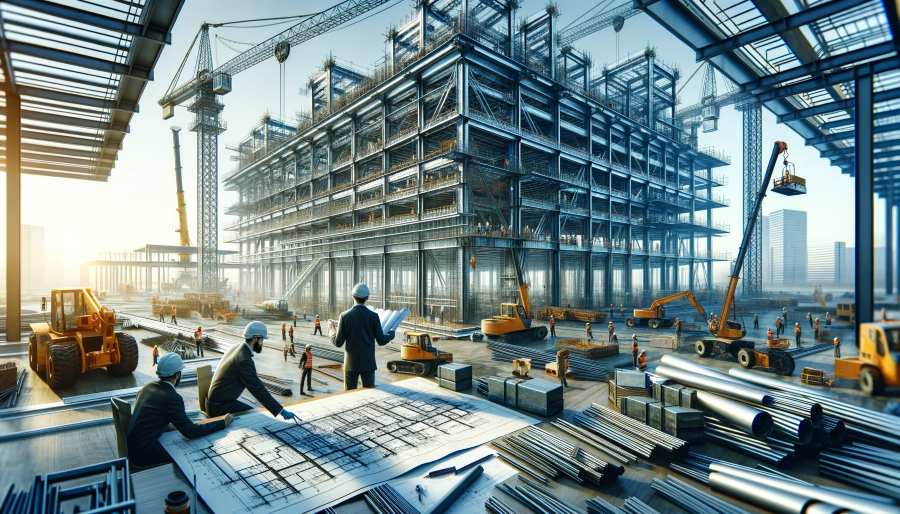
Steel Detailing Jeemon VG is an innovative company that specializes in providing cutting-edge steel detailing solutions for the construction industry. With a team of highly skilled professionals and state-of-the-art technology, Jeemon VG has revolutionized the way steel structures are designed, fabricated, and erected.
At the core of Jeemon VG’s approach is their commitment to precision, efficiency, and cost-effectiveness. By leveraging advanced computer-aided design (CAD) software and 3D modeling techniques, they are able to create highly detailed and accurate steel drawings that streamline the entire construction process.
Benefits of Steel Detailing Jeemon VG
- Reduces fabrication errors and onsite rework
- Optimizes fabrication by minimizing waste
- Ensures accurate material ordering and procurement
- Improves electability and sequence planning
- Enhances coordination between trades
- Lowers overall project risks and liabilities
- Provides vital information to steel erectors
- Allows early clash detection and conflict resolution
- Saves costs and prevents delays
Steel Detailing Process
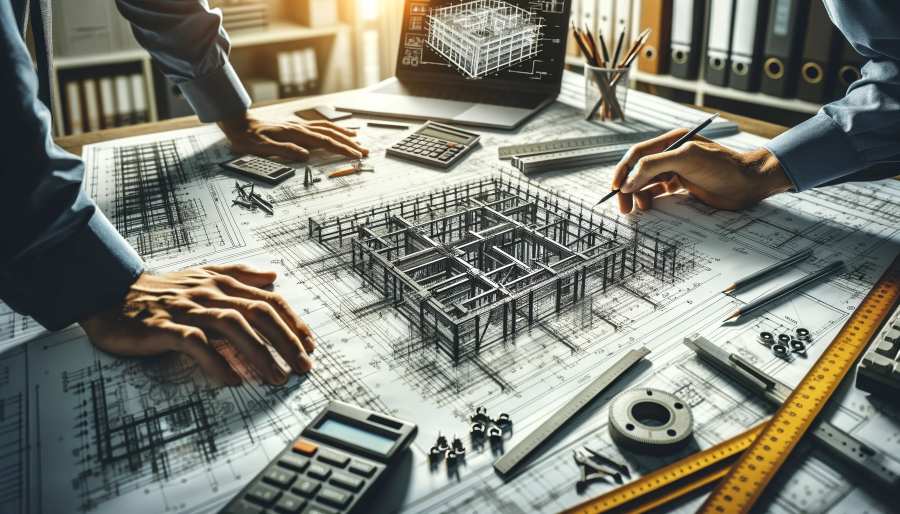
Steel detailing involves seamlessly blending engineering knowledge with the latest technological tools. Here are the typical steel detailing workflows:
Reviewing Structural Drawings
- The steel detailer starts by carefully looking at the drawings, specifications, and models provided by the engineer.
- They need to understand everything about the project, including the sizes of steel members, materials, loads, and connections.
- If there are any questions or concerns, the detailer talks to the engineer before starting their work.
- Sometimes, the detailer visits the construction site to get a better understanding of the project.
Creating the 3D Model
- Using special computer software, the detailer creates a detailed 3D model of the steel structure.
- This model includes every single part of the structure, like beams, columns, bolts, welds, and other components.
- The detailer uses their engineering knowledge and follows building codes and best practices to make sure the model is accurate and easy to build.
Generating Shop Drawings
- From the 3D model, the detailer creates 2D drawings called shop drawings.
- These drawings have all the information the fabricator needs to cut, shape, and put together the steel parts.
- The shop drawings show different views of the structure, like from the top, front, and side.
Creating Erection Drawings
- The detailer also makes erection drawings, which are like instructions for the construction crew.
- These drawings show the steps for putting the steel structure together on the job site.
- They include details like where to lift the steel parts, how to temporarily support them, and the order in which to assemble everything.
Material Takeoffs
- The detailer uses the 3D model to make a list of all the steel needed for the project.
- This list, called a material takeoff, includes the sizes, lengths, and weights of the steel pieces.
- The fabricator uses this list to order the right amount of steel for the job.
Clash Detection
- Using the 3D model, the detailer checks to make sure the steel parts don’t clash or interfere with each other or with other parts of the building, like pipes or ducts.
- If there are any clashes, the detailer works with the other teams to fix the problems before the steel is made.
Steel Detailing Jeemon VG Technology
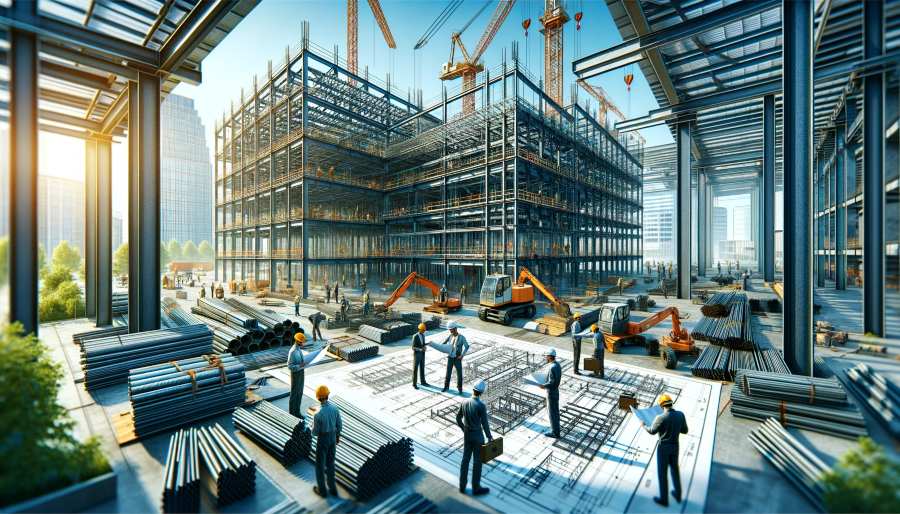
Cutting-edge technology has transformed steel detailing workflows, enabling enhanced quality, efficiency, and collaboration. Here are some of the core technologies used:
BIM Software
Detailers leverage BIM software like Tekla, SDS/2, and Revit to create coordinated 3D models packed with fabrication, erection, and assembly data. This allows seamless sharing of model information across project teams.
CNC and Fabrication Data
Computer numerical control (CNC) fabrication has been a game-changer for steel construction. Detailers provide CNC-ready model data for streamlining cutting, drilling, and assembly.
Cloud-Based Collaboration
Cloud-hosted models with online viewer apps facilitate real-time coordination across global project teams, enabling 24/7 access to the latest details.
Virtual Design and Construction (VDC)
VDC techniques such as 3D/4D modeling, virtual reality, and digital twins are transforming design reviews, construction planning, and design coordination.
Interoperability Solutions
New model-sharing formats like IFC and COBie enable greater interoperability between detailing software, fabrication machinery, and enterprise platforms.
Skills Needed for Steel Detailing
Expert steel detailing requires a rare blend of specialized engineering knowledge and technological prowess:
- Strong grasp of structural and connection design principles
- Expertise in detailing software like Tekla and SDS/2
- Efficiency in 2D drafting using CAD software
- Sharp skills in mathematical calculations
- Excellent understanding of steel fabrication and erection
- Knowledge of relevant building codes and standards
- Meticulous attention to accuracy and quality
- Advanced spatial visualization abilities
- Strong communication and collaboration skills
How to Choose a Steel Detailer
Choosing the right steel detailer is crucial for the success of your construction project. Here are key considerations when choosing a steel detailing partner:
Experience and Expertise
- Look for a detailer with a proven track record in the industry.
- Check their experience with projects similar in scope and complexity to yours.
- Ensure they have a deep understanding of steel design, fabrication, and erection processes.
Technical Proficiency
- Verify that the detailer is proficient in using the latest 3D modeling and BIM software, such as Tekla, SDS/2, or Revit.
- Inquire about their knowledge of relevant building codes, standards, and best practices.
- Assess their ability to handle complex geometries, connections, and design challenges.
Communication and Collaboration
- Choose a detailer who communicates clearly, promptly, and professionally.
- Look for a team player who can work collaboratively with architects, engineers, fabricators, and contractors.
- Ensure they have a proven system for managing revisions, RFIs, and change orders.
Quality Control and Accuracy
- Ask about the detailer’s quality control processes and procedures.
- Verify that they have a rigorous checking and review system to minimize errors and omissions.
- Inquire about their experience in clash detection and coordination with other trades.
Capacity and Resources
- Ensure that the detailer has the capacity to handle your project within the required timeline.
- Check if they have adequate staffing, hardware, and software resources to deliver high-quality work.
- Consider their ability to scale up or down based on project demands.
References and Reputation
- Ask for references from past clients and projects.
- Reach out to industry peers, fabricators, and contractors for recommendations.
- Check online reviews, ratings, and testimonials to gauge the detailer’s reputation.
Cost and Value
- Obtain quotes from multiple detailers and compare their pricing and scope of services.
- Don’t just focus on the lowest price; consider the value they bring in terms of quality, efficiency, and risk mitigation.
- Look for a detailer who can provide cost-effective solutions without compromising on quality or safety.
Global Steel Detailing Delivery Models
Steel detailing companies offer different operating and delivery models balancing costs, expertise, and geographic access:
Onshore Detailing
Pros: Maximizes local construction knowledge, facilitates in-person meetings, offers language/cultural alignment
Cons: Typically higher cost, smaller talent pool
Offshore Detailing
Pros: Significantly lower costs, larger talent pool improves scalability
Cons: Language barriers, harder to coordinate in-person, learning curve on local practices
Blended Onshore/Offshore
Pros: Balances cost, talent pool, and local knowledge through staffing mix
Cons: Partial loss of advantages from sole onshore or offshore Model
Independent Detailing Firms
Pros: Unbiased decision-making, high responsiveness, specialized expertise
Cons: Less scalable capacity, higher risk profile
Detailing Arms of Fabricators/Contractors
Pros: Tighter project integration, stable detailing resource
Cons: Potential bias toward in-house fabrication, less detailing innovation
Choose the Model that aligns best with your budget, schedule, quality needs, and organizational structure.
Technology Trends Transforming Steel Detailing
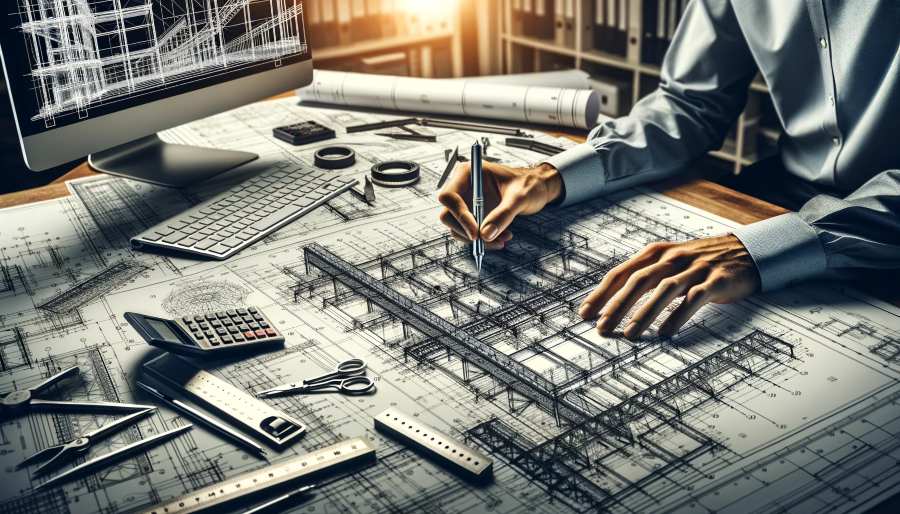
Generative Design and AI
AI can automate repetitive detailing tasks, while machine learning offers generative design exploration for steel optimization.
Predictive Modeling and Analytics
Data-driven analytics will predict design outcomes related to constructability, cost, schedule, safety, etc., during detailing.
Extended Reality
XR technology can provide immersive project walkthroughs and design coordination sessions, improving quality and communication.
Cloud Worksharing
Cloud-based COMMON team environments with full support for model visualization enhance global team coordination.
Model Data Integration
New ecosystems will interconnect detailer models to fabrication equipment and jobsite asset management through inclusive data formats like IFC and COBie.
Digital Continuity
A centralized model accessible across project lifecycle phases from design through construction and facility management will emerge.
Steel Detailing for Common Structures
Detailing intricacies vary across building types based on steel design complexity, fabrication limits, quality needs, and construction methodology.
High-Rise Buildings
High-rise structures require coordination of complex detailing between steel framing, concrete cores, floor decking, column transfers, and metal decking.
Long-Span Roofs
Long-span roofs demand optimized detailing to balance weight, fabrication limitations, strength, and constructability. Trusses, plate girders, space frames, and arches each have unique needs.
Stadiums
Sports venues utilize long-span trusses with complex geometries and fabrication needs. Additionally, spectator vibration must be analyzed and accommodated.
Bridges
Bridge detailing must account for the effects of torsion, fatigue, multi-directional loading, skewed geometry, and field splice locations.
Case Studies: Steel Detailing Success Stories
Let’s analyze a few case studies showing steel detailing excellence delivering major project benefits:
Mercedes Benz Stadium, Atlanta
This stadium’s complex geometrical steel facade and retractable roof required intricate detailing for constructability. Over 41,000 tons of structural steel was utilized. The project used Tekla models to deliver this uniquely complex geometry on budget and schedule.
SoFi Stadium, Los Angeles
With long steel spans supporting a canopy roof structure, detailing enabled prefabrication and modularization to minimize fieldwork. This innovative detailing approach completed the project 3 months ahead of schedule.
Wilshire Grand Center, Los Angeles
At 1,100 feet, this building’s curved glass facade posed steel detailing challenges. Early detailing involvement enabled optimization between aesthetics, cost, and engineering, leading to $75 million in savings.
Golden Gate Bridge, San Francisco
When upgrading bridge cables, steel detailing innovations provided a 3D model-based plan, allowing safer installation. This avoided a $200 million rework from potential earthquake damage had cables failed.
Forest City, Malaysia
For this sizable mixed-use development, enhanced steel detailing coordination minimized costly site rework by over 75%, saving $5 million. The detailing team used Tekla models to achieve this.
FAQs on Steel Detailing
Structural engineers design the steel frame layout and components. Steel detailers then provide the workshop and erection drawings to fabricate and erect the steelwork physically.
Proper detailing lowers errors, delays, and costs while ensuring the architect’s and engineer’s original design is interpreted accurately into something that can be built.
Detailing requires specialized expertise in areas like steel fabrication, BIM software, technical drafting, engineering principles, codes, construction processes, coordination, communication, and analytical thinking.
Detailers cannot change the core structural design without the engineer’s review and approval. However, they suggest alternate details that improve constructability, efficiency, and costs.
The duration varies based on building complexity and size. On average, expect 1-2 weeks per structural floor for commercial high-rises, requiring 4-12 weeks for an entire building model.
While rebar focuses on placing and listing bending schedules for reinforcing bars in concrete, steel detailing involves creating complete fabrication and construction drawings for all structural steel components.
Most detailing can be performed using out-of-the-box software features. However, coding skills allow customization for enhanced efficiency. Knowledge of APIs, VBA, Python, C#, etc. is helpful for automation.
Many routine detailing tasks can be automated through processes like rule-based modeling, custom scripting, and AI-based generative design. This improves quality and productivity. But core detailing work still requires human ingenuity.
Transforming Steel Construction with Detailing Excellence
As architectural designs grow bolder and engineering boundaries expand, innovative steel detailing enables the realization of increasingly daring structures. Detailers integrate state-of-the-art technical skills with emerging digital advances to bring spectacular visionary buildings to life.
Precision steel detailing provides the vital blueprint for executing the structural engineering vision while enabling more streamlined and cost-efficient fabrication and erection. By bridging design with construction, steel detailing removes project bottlenecks and empowers exponential strides in constructed form and function.
With continued technological progression, steel detailing is entering a new era of increased productivity, quality, and collaborative empowerment. Automation, AI, XR, and interoperability will reshape detailing workflows. But at its core, human ingenuity, engineering expertise, and digital craftsmanship in transforming imaginative structural design into buildable practical reality is what drives steel detailing jeemon vg.
Mastering this critical mix of specialized technical skills and cutting-edge technology will maximize steel detailing’s impact as construction’s digital transformation accelerates into the future.
Conclusion
Steel detailing expertise is vital for successful fabrication and erection outcomes in steel construction projects, both simple and complex. As construction projects continue pushing the boundaries of design, height, and geometry, innovative and quality-driven steel detailing services will be a key enabler in transforming structural engineering concepts into physical reality. With technological advancements enhancing productivity and expanding global talent access, the future of next-generation steel detailing indeed looks bright.


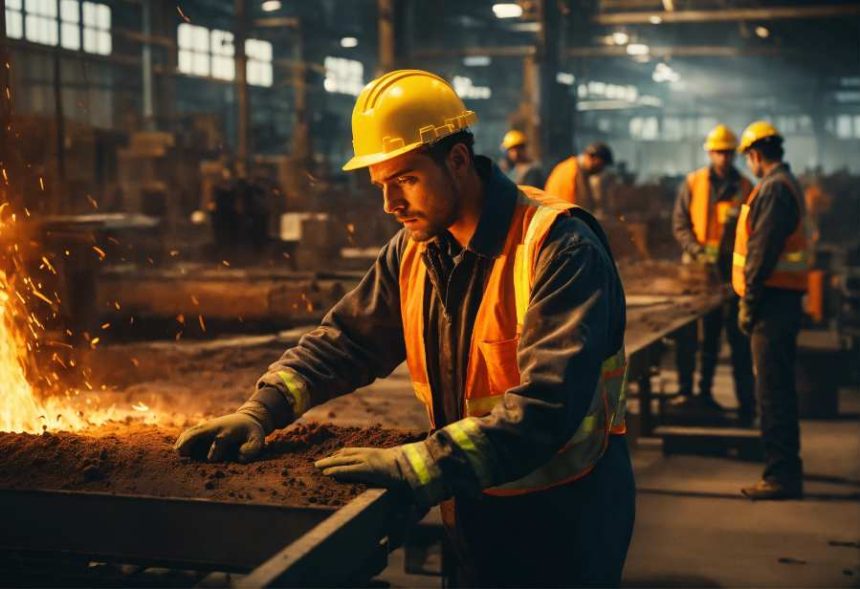


Hi, i believe that i noticed you visited my weblog thus i got here to return the favor?.I am trying to to find issues
to enhance my website!I guess its adequate to use some of your ideas!!